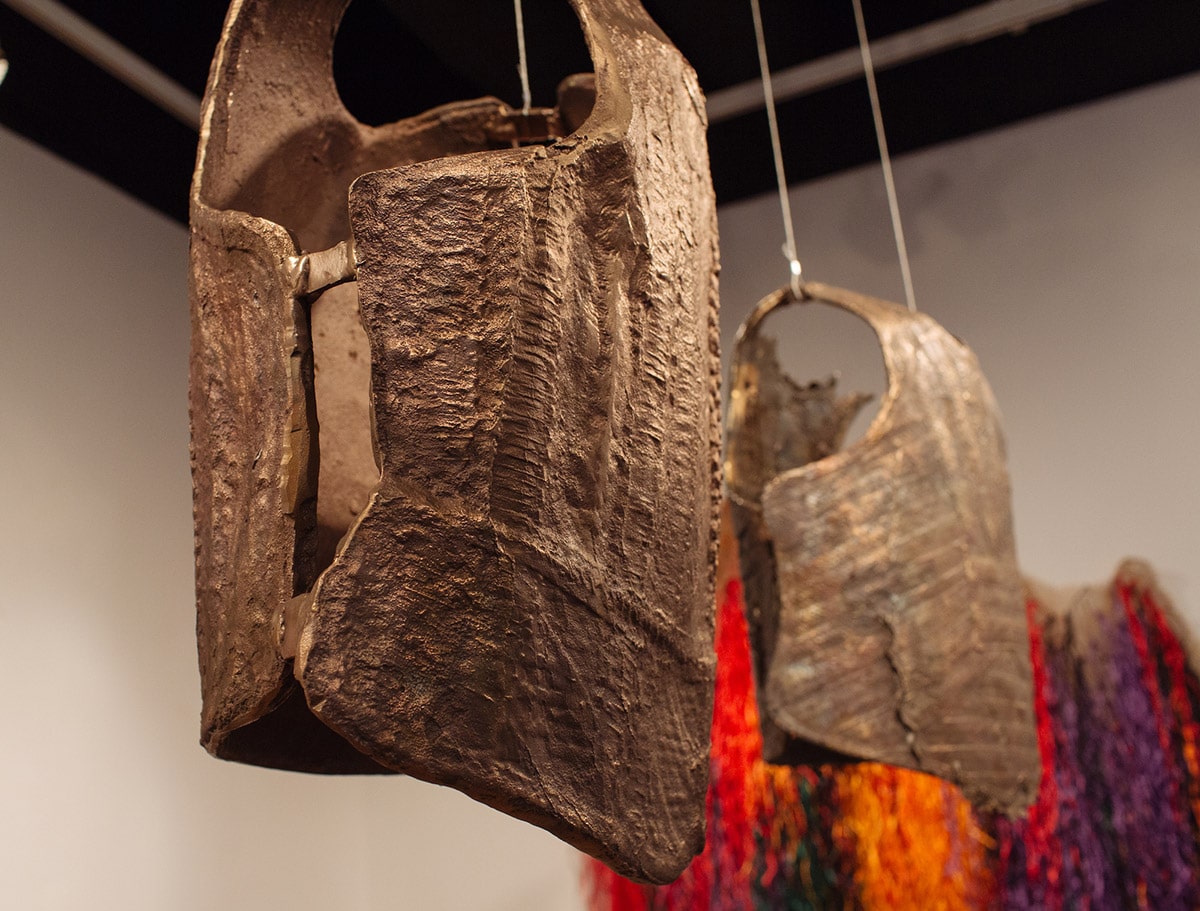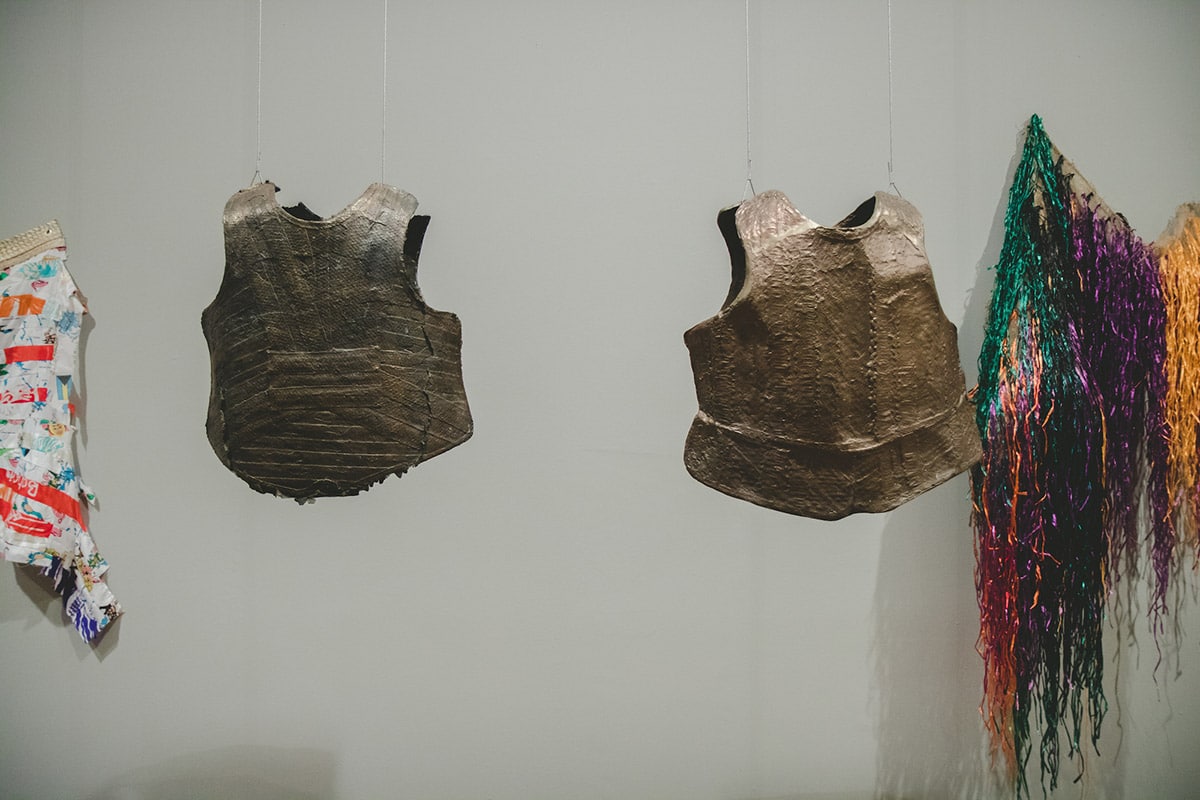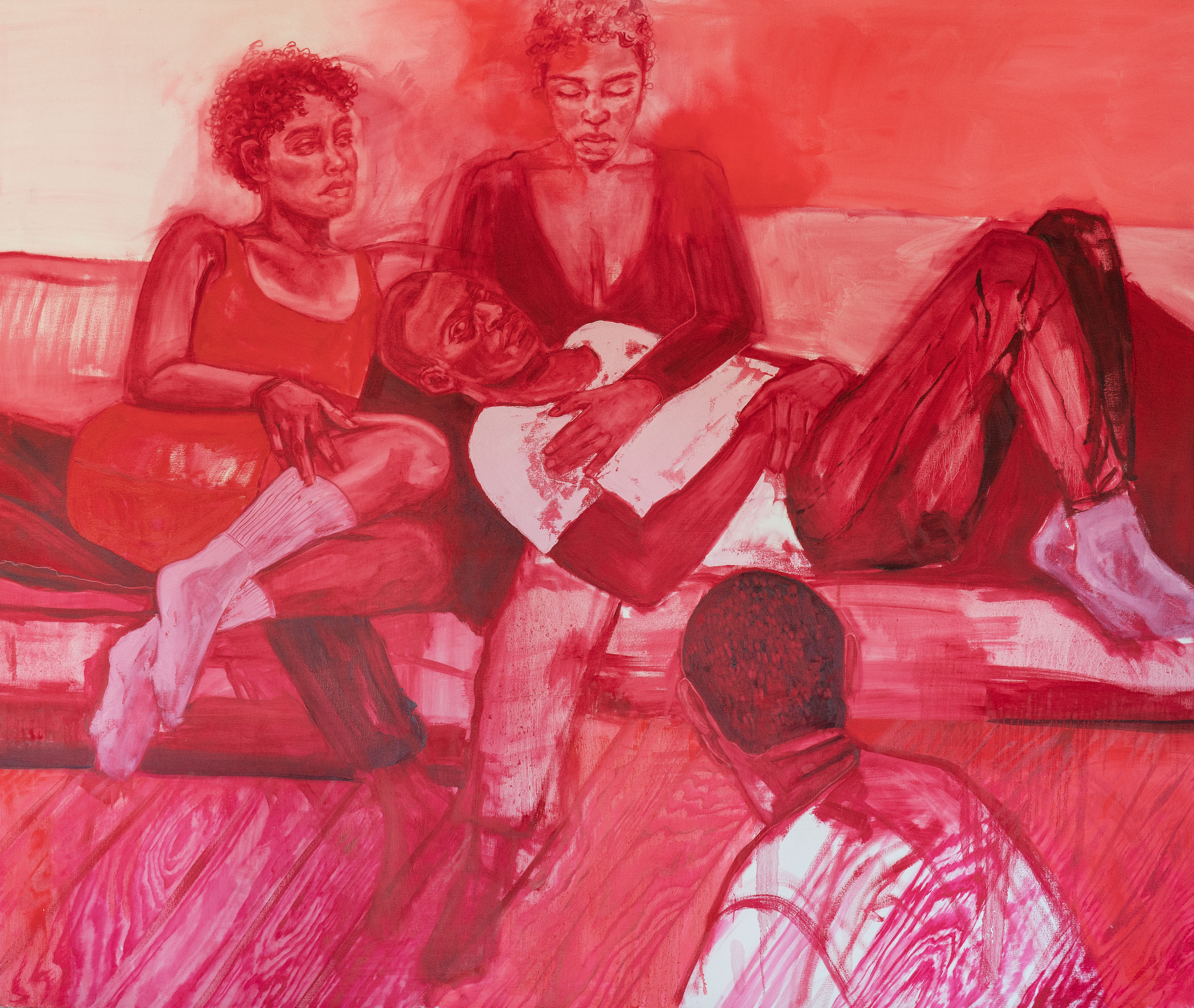Under Attack: Averia Wright and the Dualities of Bahamian Identity

War for much of the Caribbean is a remote idea – a thing of books, films, and faraway lands. In a region characterised by calm waters, light breezes, and laidback locals, the notion seems oddly out of place. But the idea is not just a distant one. It’s also awfully dangerous. War necessarily conflicts with what Caribbean nations like The Bahamas ‘should’ be, that is, a peaceful escape for the worn and overworked. Put simply: conflict in the Caribbean is off-brand. And in our Bahamaland, where at least sixty percent of the GDP and half the workforce rely on a carefully manufactured and embellished brand image, being off-brand can be about as deadly as armed conflict.
As the daughter of a straw vendor in a family of straw vendors, Bahamian sculptor and expanded practice artist Averia Wright is well-acquainted with the brand of paradise we manufacture here. Her work, which grapples with issues affecting both The Bahamas and the region at large, is particularly concerned with tourism and its role as a neocolonialist system in the country today. Elevating the Blue Light Special (2018), Wright’s submission for the NE9: The Fruit and the Seed addresses just this concern, exposing and critiquing the commercialisation of identity which is so central to the contemporary tourist economy.
Featuring a pair of bronze-casted straw breastplates flanked by two curtain-like draperies formed from tourist objects, Wright’s mixed media installation conjures up a striking mélange of the familiar and foreign. Indeed, most Bahamians would recognise the rolls of plait, the strips of Androsia and the strands of raffia that make up the installation. These, no doubt, are common elements in the commerce of paradise. What may be peculiar and perhaps even unsettling about Wright’s installation to the local eye, however, is the way these familiar objects are cast and arranged. One cannot help but notice a degree of artifice in the installation. Whether in the carefully draped fabric or in the multicoloured strands of raffia that bulge and dangle from a delicate, coyly disguised mesh, a certain pretense prevails. But it is not so much this artifice per se that is troubling. Wright’s installation is unnerving because of what is suggests about the broader operations of the tourism industry. Through a series of careful castings of Bahamian identity, the installation examines the dualities of who we are as Bahamians and who we portray ourselves to be.
For Wright, the straw armor “symbolically addresses a borrowing of our colonial past and reclaiming the connection to a foreign idea of protection and uniformity. In a country where there is no substantial armed force the tenuousness of the straw armor asks, is this covering for a person or the country? What can this protect a person from? What are the projectiles that are coming at them?” The allusion to combat here cannot be missed. Though we would like to believe otherwise, an odd war is being waged in The Bahamas. Seemingly out of place and anachronous, this battle is not being fought with guns and ammunition. It is being fought with T-shirts, postcards, and plush dolls. At stake is not necessarily life, but a way of life. Not the individual, but identity.

But what exactly is the cause of this conflict? Why is there a disconnect between the actual and imagined Bahamian identity? Well, as Wright’s installation highlights, in manufacturing cultural products the tourism industry is faced with a paradoxical demand. Not only must it manufacture cultural representations which embody accurate cultural meanings, but these products must be attractive to and align with the demands of tourists (Selling culture? Between commoditisation and cultural control in Indigenous alternative tourism, Coronado 2014). For Caribbean economies which often rely so heavily on the profits of their tourism economies, the demands of a global capitalist market often preclude, unsurprisingly so, the production of authentic, meaningful cultural goods. Elevating the Blue Light Special captures the contrived nature of this phenomenon, showing just how drastically Bahamian identity is shaped by foreign expectations.
We need not look much further than the title of the installation to see the issue of foreign influence at work. Wright reveals, “Working in the straw market with my mother I would be more of an observer than a participant in the point of sale […] I would listen to the tag lines that vendors would use to draw customers to their stall. Many of them are very humorous and that gets the tourist to take a closer look and sparks a conversation. Sometime ago Kmart had a tagline saying something along the lines of ‘Come get the Blue Light Special.’ As a large base of our tourists are North American, this tagline was a huge pull when used in the straw market. I chose this title because I am using the material of the industry to talk about the industry itself and in this format of exhibiting in a gallery space as fine art it is essentially elevated.”
The title of Wright’s installation speaks to the ways in which we Bahamians continue to cater to tourist expectation, whether that be by carefully adapting our marketing strategies or even going as far as incorporating elements of other cultures into our goods to make them more desirable (as can be seen in the case of Disney character designs being rendered on straw bags). At the end of the day, such practices not only inspire insularity on the part of the visitor by delegating all the work of cultural exchange to the local but also privilege and reward a knowledge of other cultures over one’s own. Elevating the Blue Light Special pushes back against this process by raising up and showcasing the splendor of Bahamian handicrafts. In shining a light on the artifice at work in the industry, she offers up the kindest of compliments: we can be better.
The installation, however, does not simply address the dualities of Bahamian identity, it also asks us to consider the repercussions of an increasingly commodified and tourist-centric culture. The effect of inauthentic cultural production in The Bahamas – a symptom of the Bahamian identity conflict – is that tourism no longer works to conserve our culture. Rather than promote genuine cultural exchange, it constructs a palatable cultural product which conforms to tourist expectation. The desire to consume products of another culture then becomes not so much an expression of genuine interest and appreciation of that culture, but a hunger to be served in pre-imagined ways. Particularly in the context of the Caribbean, the nation is transformed into an otherworldly escape, positioned as subordinate and in service to the visitor as part of a grand, fictitious narrative designed and sustained by the industry itself.

One example of how tourist demand has shaped the Bahamian landscape is the recent ‘swimming pig’ sensation. What began as an isolated colony of pigs on one cay in the Exumas has been transformed by social media and clever marketing into a phenomenon of global fascination. Swimming pigs have since been universalised as part of an authentic Bahamian experience, driving businesses to introduce populations of the animal to remote settings with little thought given to environmental impact and animal welfare.
Cultural commodification is again dangerous because it can lead to the conflation of Caribbean cultures, as can be seen in the sale of Rasta wigs and T-shirts inscribed with Jamaican patois–Yeah Mon–in Bahamian souvenir shops. Limited knowledge on the part of tourist consumers drives the industry to conflate the diverse and rich intricacies of culture at play on the different islands – stirring them together and rendering them indistinct and shallow in the tourist imagination. This misrepresentation is dangerous because it does not seek to educate and offer a more nuanced view of Caribbean nations, but rather reinforces inaccuracies in the global imagination and stifles any form of cultural fluency, that is, genuine awareness of the cultural landscapes in question.
With all this to contend with, how do we counteract the pressures of the global capitalist market and ensure Bahamian culture is authentically cultivated and conveyed? In short, how do we promote a more sustainable tourism model?
At the end of the day, if tourism is to be sustainable in The Bahamas, it must align with the needs and expectations of Bahamians. Until then, it will be up to artists like Averia Wright to work toward critiquing and decolonising what is not just our number one industry, but our number one national threat.
Related
